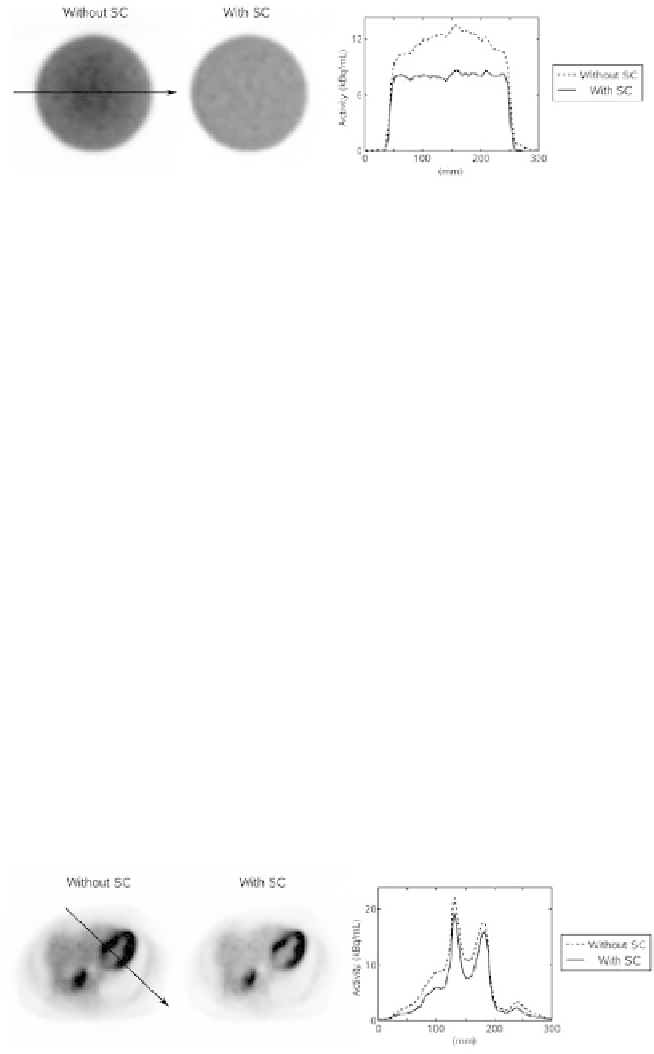Biomedical Engineering Reference
In-Depth Information
FIGURE 5.20: PET image of a cylinder phantom containing
68
Ge. With-
out correcting for scattered coincidences, the overall activity is overestimated
and inhomogeneous (left). Subtracting the scattered events by proper scatter
correction (middle) leads to homogeneous activity levels as demonstrated by
the line profile along the arrow (right).
struction derived from gated data. Studies in this field have incorporated
rigid-body transformations [58], ane transformations [50] and elastic motion
models [24]. Detailed insight into these methods are given in Chapter 8.
5.5 Scatter correction
Attenuation correction aims to correct for the loss of photons along a line
due to photoelectric absorption or Compton scattering. However, as Compton
scattered photons are not lost for detection (in contrast to photons undergoing
photoelectric absorption), the acquired raw data are contaminated by these
scattered photons. As the photons after scattering no longer possess valid in-
formation about their point of origin, they have to be removed (subtracted)
from the raw data to ensure absolute quantification of radioactivity (see Fig-
ures 5.20 and 5.21). Different strategies for this task have been developed for
FIGURE 5.21: Transverse PET images of a cardiac FDG patient study.
Scatter correction leads to improved image contrast (middle) as evidenced by
the line profile along the shown arrow (right).









Search WWH ::

Custom Search